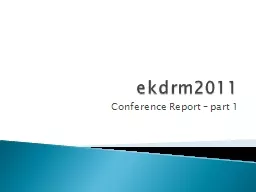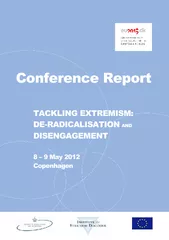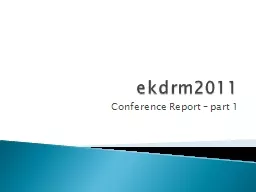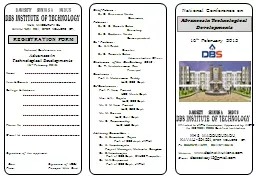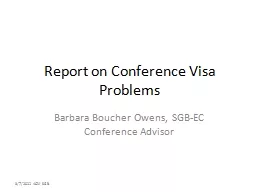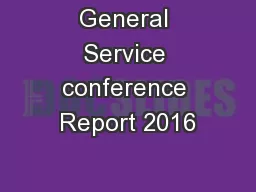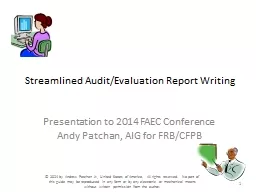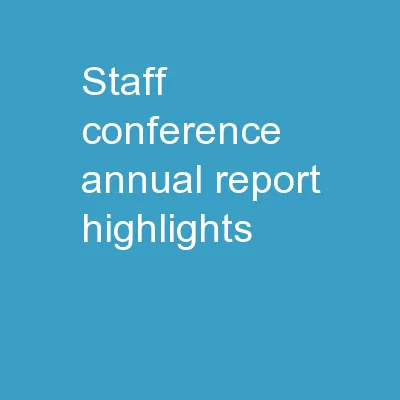PPT-ekdrm2011 Conference Report – part 1
Author : myesha-ticknor | Published Date : 2018-03-08
Total number of selected abstracts 19 Total Number Presented 6 Session 1 Enironmental Statistics and Decision Support Systems Presentations covered the following
Presentation Embed Code
Download Presentation
Download Presentation The PPT/PDF document "ekdrm2011 Conference Report – part 1" is the property of its rightful owner. Permission is granted to download and print the materials on this website for personal, non-commercial use only, and to display it on your personal computer provided you do not modify the materials and that you retain all copyright notices contained in the materials. By downloading content from our website, you accept the terms of this agreement.
ekdrm2011 Conference Report – part 1: Transcript
Download Rules Of Document
"ekdrm2011 Conference Report – part 1"The content belongs to its owner. You may download and print it for personal use, without modification, and keep all copyright notices. By downloading, you agree to these terms.
Related Documents

